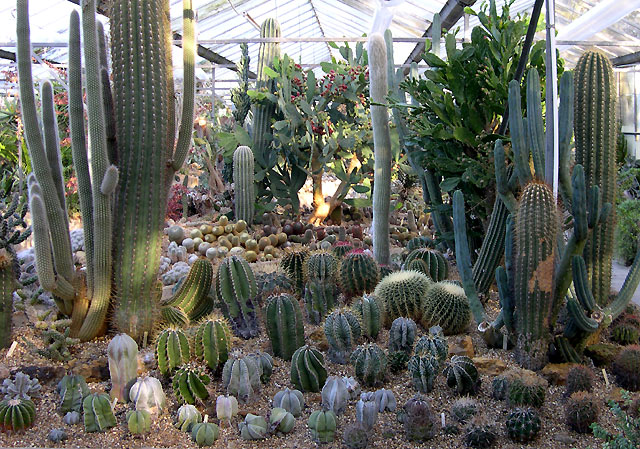The temperatures are climbing across the country, and that means everyone wants to get outside! I’m being careful not to start planting too soon for fear that a frost may still come to bite my plant babies, but I have big plans to transform our current dustbowl.
Southwest Oklahoma has been the most challenging landscape I have ever worked with when it comes to growing and maintaining anything in the yard. We have the least amount of rain I have ever experienced, temperatures which typically exceed 100 degrees Fahrenheit in the summer and a number of days over 120 degrees, winds that blow much harder than the Windy City I call home, and winters that send harsh ice storms. Plus the soil is just kind of junky in our corner of the state. And my three precious dogs have destroyed what semblance of a lawn did exist in my backyard.
Enter, my three pronged plan of attack to conquer my backyard and create a low maintenance, low water consuming, high heat tolerating oasis!

Groundcover
Typical lawn grasses simply are not cutting it for us. They require too much watering and Southwest Oklahoma does not get much rain. Our community has faced water restrictions almost every summer since my husband moved here, so I am not comfortable with a landscape which requires daily watering. If I wanted traditional green grass, I’d move back to the Southeast or the Great Lakes region.
So, we need something that can grow in dry, sandy, barren soil with little water and can stand up to foot traffic. Big bonus if it holds up to foot traffic, i.e. three dogs. Enter the noble delosperma or ice plant.

Ice plant is a resilient and visually striking succulent known for its ability to thrive in arid and rocky environments. Native to South Africa, this hardy plant has become popular in various regions around the world due to its low maintenance requirements and vibrant, daisy-like flowers.
Characterized by its thick, fleshy leaves that store water, the ice plant’s foliage ranges in color from shades of green to blue-gray, and some varieties even exhibit a reddish tint. Its succulent leaves have a glistening appearance, resembling tiny droplets of ice, hence the name “ice plant.”
During the blooming season, which typically occurs from late spring through summer, the ice plant produces an abundance of colorful flowers that cover the plant like a colorful carpet. These flowers come in a spectrum of hues, including shades of pink, purple, yellow, orange, and white, attracting pollinators such as bees and butterflies.
One of the remarkable features of the ice plant is its ability to spread and form dense mats, making it an excellent ground cover for gardens, slopes, and rock gardens. It is also well-suited for container gardening, where it can spill over the edges of pots, creating a cascading effect.
In terms of care, ice plants thrive in full sun and well-drained soil, making them ideal for xeriscaping and dry landscapes. They are drought-tolerant once established and require minimal watering, making them perfect for water-wise gardening. Additionally, they are relatively pest and disease resistant, further adding to their appeal for gardeners seeking low-maintenance plants.
Overall, ice plants are an excellent choice for gardeners looking to add color, texture, and drought tolerance to their landscapes. With their dazzling display of flowers and ability to thrive in harsh conditions, they bring a touch of beauty to gardens while requiring little attention. I love a low maintenance stunner.
Rock Succulent Garden
During the winter season, we took advantage of some bargain pricing from a local landscaping company and had our defunct pond torn apart and filled in. This involved tearing out a pergola, removing all the large rocks surrounding the pond, ripping out the pond liner, pump, and waterfall, and finally rearranging the rocks in a relatively flat surface. The rocks still need some rearranging, but the majority of the heavy lifting has been completed.

My goal for this new space will be a beautiful succulent garden. I need plants that can hold up to the harsh variety of conditions that Southwest Oklahoma has to offer, so I have chosen plants that will tolerate both freezing winter temps and high high heat. These are not your room temperature houseplants you see on desks. These are hardy, comeback kids that keep on going through the most brutal conditions.
- Agave: Agaves are hardy succulents that can tolerate the intense heat and occasional frost of Southwest Oklahoma. They come in various sizes and shapes, adding architectural interest to landscapes.
- Yucca: Yuccas are native to arid regions and are well-adapted to the dry, hot conditions of Southwest Oklahoma. They have sword-shaped leaves and produce tall spikes of white flowers in the summer.
- Sedum: Sedums are drought-tolerant succulents that come in many varieties, including low-growing ground covers and taller border plants. They thrive in full sun and well-draining soil.
- Echeveria: Echeverias are popular rosette-shaped succulents that come in a wide range of colors and sizes. They prefer bright light and well-draining soil, making them ideal for Southwest Oklahoma’s climate.
- Aloe: Aloes are succulents known for their medicinal properties and attractive foliage. They thrive in hot, dry conditions and can tolerate some neglect.
- Opuntia (Prickly Pear Cactus): Prickly pear cacti are native to the region and can withstand the extreme temperatures and low rainfall of Southwest Oklahoma. They produce colorful flowers in the spring and edible fruits.
- Kalanchoe: Kalanchoes are easy-to-grow succulents that produce clusters of colorful flowers in the winter and spring. They prefer bright, indirect light and well-draining soil.
I will be supplementing the soil in my rock garden with a well draining succulent/cactus mix in order to avoid root rot during the more moist parts of spring. The garden is in full sun, so these little plant babies should be plenty happy!
Planting a Prairie Garden
I was perusing Oklahoma City’s Myriad Botanical Gardens’ website when I stumbled across their Plant a Prairie Sale (https://myriadgardens.org/prairiesale/). The page still has last year’s information, but they sell pre-planned prairie gardens for around $75. I am unable to attend this year to purchase as the sale only runs one Saturday, but I am inspired to try my hand at planting a prairie garden.
These gardens cover about 175 square feet when mature and come in a variety of mixes like low grow or go big blend. I plan on emulating the 50 plant wild mix consisting of wild bergamot, little bluestem, butterfly weed, Ohio spiderwort, rattlesnake master, purple coneflower, and yellow prairie grass. Each plant set comes with a description of the plants, a design layout for the garden, and planting/care directions. I will also add in some additional plants as found on Prairie Nursery’s Designing Natural Landscapes: Garden Design with Native Prairie Plants (https://www.prairienursery.com/media/pdf/designing-natural-landscapes-garden-design-with-native-prairie-plants.pdf).

Planting a prairie garden in Oklahoma can have a lot of advantages:
- Biodiversity: Native plant species attract diverse wildlife such as birds, butterflies, bees, and other pollinators. By planting a variety of native plants, you contribute to the preservation of Oklahoma’s natural biodiversity.
- Drought Resistance: Many native prairie plants are adapted to Oklahoma’s hot and dry climate, making them resilient to drought conditions once established. These plants typically have deep root systems that enable them to access water stored in the soil, reducing the need for irrigation.
- Soil Health: Prairie plants play a crucial role in maintaining soil health. Their deep roots help to prevent erosion by stabilizing the soil, while also improving its structure and fertility. This can be particularly beneficial in Oklahoma, where soil erosion can be a challenge, i.e. my backyard that looks like a scene from a documentary on the 1930s migration of Oklahomans…
- Water Conservation: Prairie gardens typically require less water than traditional landscaping with non-native plants. By choosing drought-tolerant native species, you can reduce your water consumption and contribute to water conservation efforts in the region. Remember, my community faces frequent watering restrictions.
- Aesthetics: Prairie gardens offer a unique and beautiful aesthetic, with a dynamic mix of grasses, wildflowers, and other native plants. They can provide year-round interest, with seasonal changes in foliage, blooms, and seed heads adding visual appeal to the landscape.
All in all, it is going to be a busy spring of aerating, and planting, and many, many trips to the greenhouse! I look forward to sharing how everything turns out with my readers!



Leave a comment